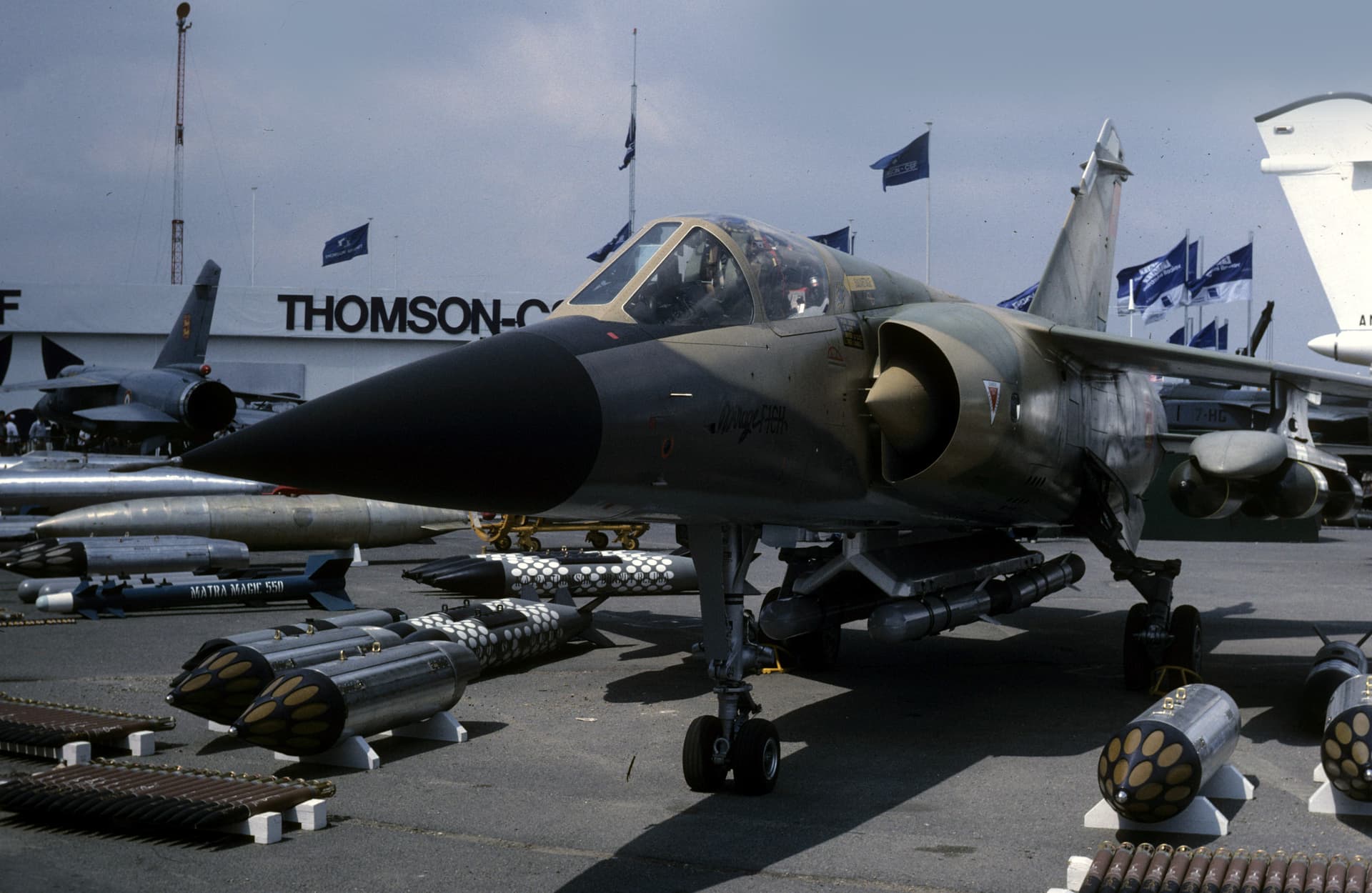- Yes
- No
Welcome to this suggestion for adding the Matra Durandal bomb.

The Matra Durandal bomb is a munition intended to destroy take-off/landing runways. The origin of this bomb dates back to the mid-1960s, a period during which a first anti-runway bomb had been designed in collaboration by Matra (now MBDA) and the Israeli army in order to meet the needs of the latter.
In 1973, Matra (alone this time) finished developing a new anti-runway weapon (using the work done previously), this weapon, put into production from 1977 and named Durendale, was immediately in service on almost the entire fleet of French aircraft at the time.
In the early 1980s, the American Air Force acquired Durandales for its F-111s in order to give them an anti-runway strike capability, then during exchanges with the French, these bombs were equipped on F-15s and F-16s.
Symbolism
Durandal is the name of the sword of Rolan, Charlemagne’s nephew. During the Battle of Roncevaux, a battle in which Charlemagne’s rearguard was ambushed and decimated by the Vascons, Rolan, not wanting his sword to fall into the hands of the enemy, tried to break it on a stone but the sword pierced him without resistance, creating the Roland breach. Roland then threw his sword towards the valley. It then miraculously crossed several hundred kilometers before getting stuck in the rock of Notre-Dame de Rocamadour, a religious site.
There is a certain symbolism in the name of the bomb, as it can cross thick layers of bitumen/rock in order to destroy runways, as the sword that created a breach.
Operation and use
This bomb having as objective the destruction/neutralization of the enemy tarmacs, Matra used a particular technique, allowing more important damages and especially more difficult to repair than those made by classic bombs.
The Durandale is therefore composed of 2 explosive charges, the first (about 15 kg) is used to pierce the tarmac, this one allows to reach a depth of 40 cm placing the bomb under the runway. Once arrived at this level, the second explosive charge detonates, shaping a crater of 2 meters in depth and 5 meters in diameter under the runway and damaging the tarmac over an area ranging from 150 to 175 square meters. This particular way of exploding forces the enemy to destroy a part of its tarmac in order to assess the damage before repairing, which considerably lengthens the time necessary to make the repairs.
Regarding the dropping of the Durandale on a target. It should first be noted that the bomb is dropped in clusters on the enemy runway in order to maximize damage. Due to the small size of the bomb, it can indeed be carried in large quantities.
Once the bomb is dropped, it deploys 2 parachutes allowing it to orient itself towards the target, once an angle allowing no ricochet is reached, the engine starts, tearing off the parachutes and propelling the bomb towards the tarmac.
Characteristic
- Length : 2700 mm
- Body Diameter : 223 mm
- Wingspan : 420 mm
The bomb has a much narrower profile than standard bombs. The four small fins at the rear give it a certain stability during its flight.
- Weight : 219 kg
- Warhead : 100 kg with a 15 kg penetration head
The explosive charge in the bomb is split into two, the first (the lightest) being used for penetration and the second for destruction.
- Motor : Snecma RP30 (solid fuel engine)
- Thrust : 92.4 kN
- Burning time : 0.45 s
- Max speed : up to 270 m/s
The rocket motor at the rear of the munition allows it to gain in penetration capacity, however the short combustion time requires a low altitude release to obtain the highest results.

Planes
Many planes present in the game can carry this ammunition, this is the case for example:
Jaguar A
Up to 6 bombs under the wings and 3 under the fuselage
Mirage III
Up to 8 bombs, distributed in the center and under the wings of the aircraft

Mirage 5
Up to 8 bombs, distributed in the center and under the wings of the aircraft
Mirage 2000
Up to 8 bombs, distributed under the aircraft

A-4
Up to 6 bombs, distributed under the aircraft

F-4
Up to 12 bombs, distributed under the wings of the aircraft
(Maybe 6 more on the central hardpoint)
F-5
Up to 4 bombs under the wings
F-15
Up to 4 bombs under the wings, 8 on the CFTs and 6 on the the central hardpoint

F-16
Up to 12 bombs under the wings
F-111
Up to 24 bombs under the wings

This list is not exhaustive, as other aircraft are probably capable of firing this munition.
Sources
[1] COAMERO .QXD
[2] Durandal | Weaponsystems.net
[3] Matra BLU-107/B Durandal
[4] Aéronautique - Les bombes modernes
[5] Microsoft Word - VM0170.DOC
Tell me what you think about it






